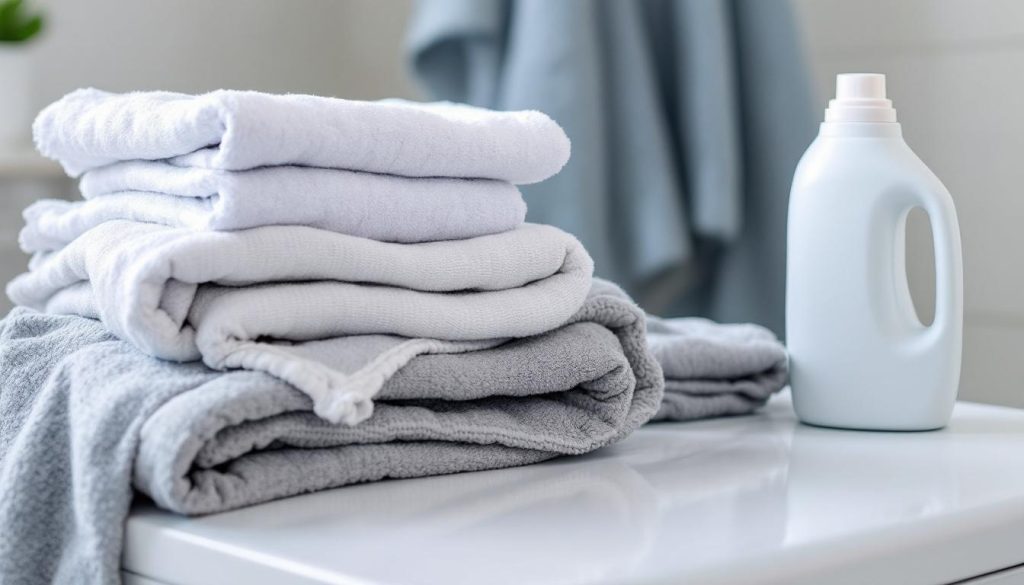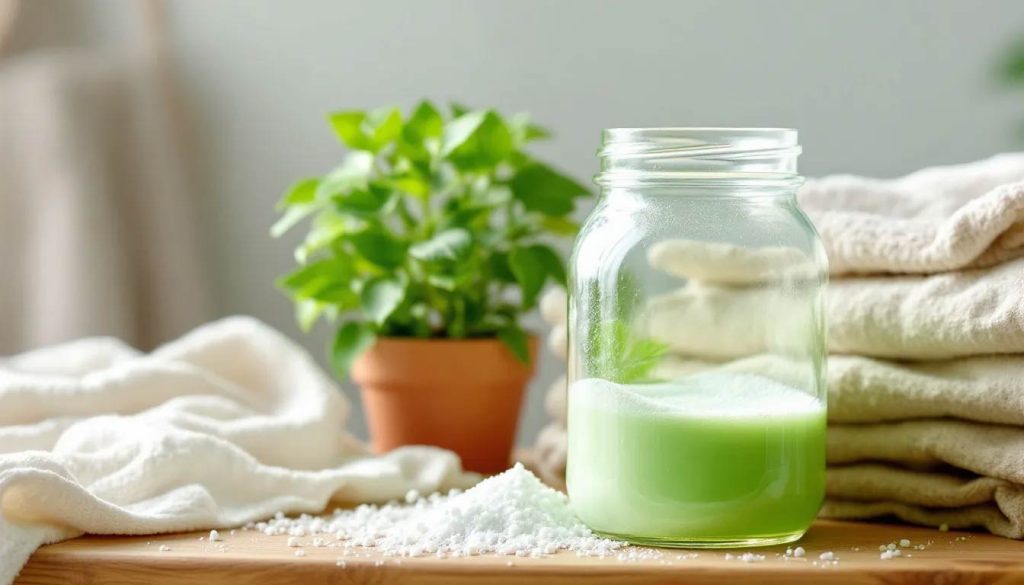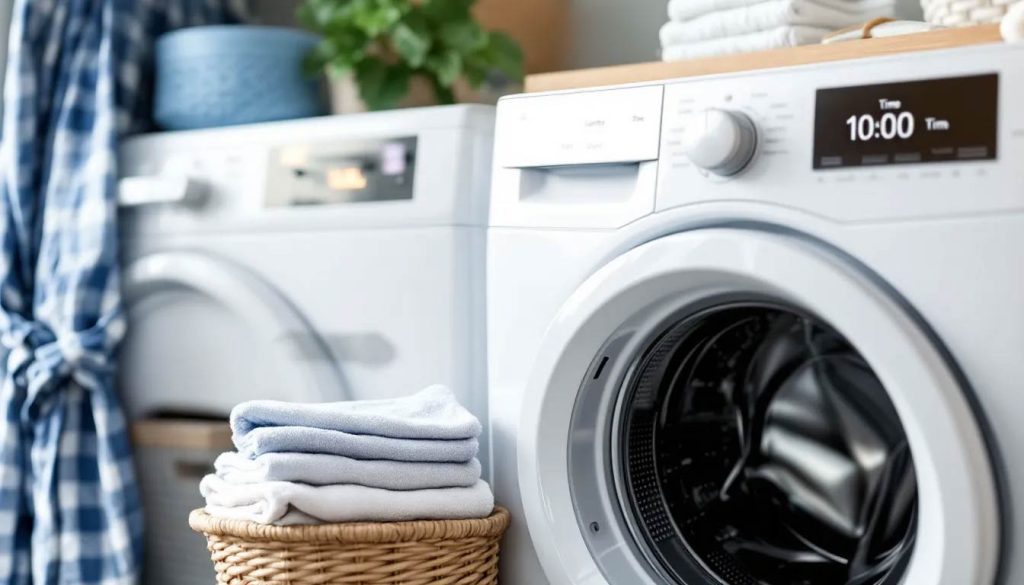Busy schedules demand quick and clean laundry solutions that actually work. Most people waste time and money using ineffective washing methods that leave clothes looking dull or damaged.
We at Oasis Laundry know the right techniques make all the difference. The following strategies will transform your laundry routine into an efficient system that delivers professional-quality results every time.
Pre-Treatment Strategies for Better Results
Immediate Stain Action Saves Your Clothes
Stain treatment within the first few minutes determines whether your clothes survive or become casualties. Liquid detergent applied directly to fresh stains works better than any commercial stain remover, according to Consumer Reports tests. Dab three tablespoons of your regular liquid detergent onto the stain, gently scrub with a soft-bristle toothbrush, and let it sit for 15 minutes before you wash. This method removes 90% of common stains compared to just 60% success rates when you treat stains after they set.
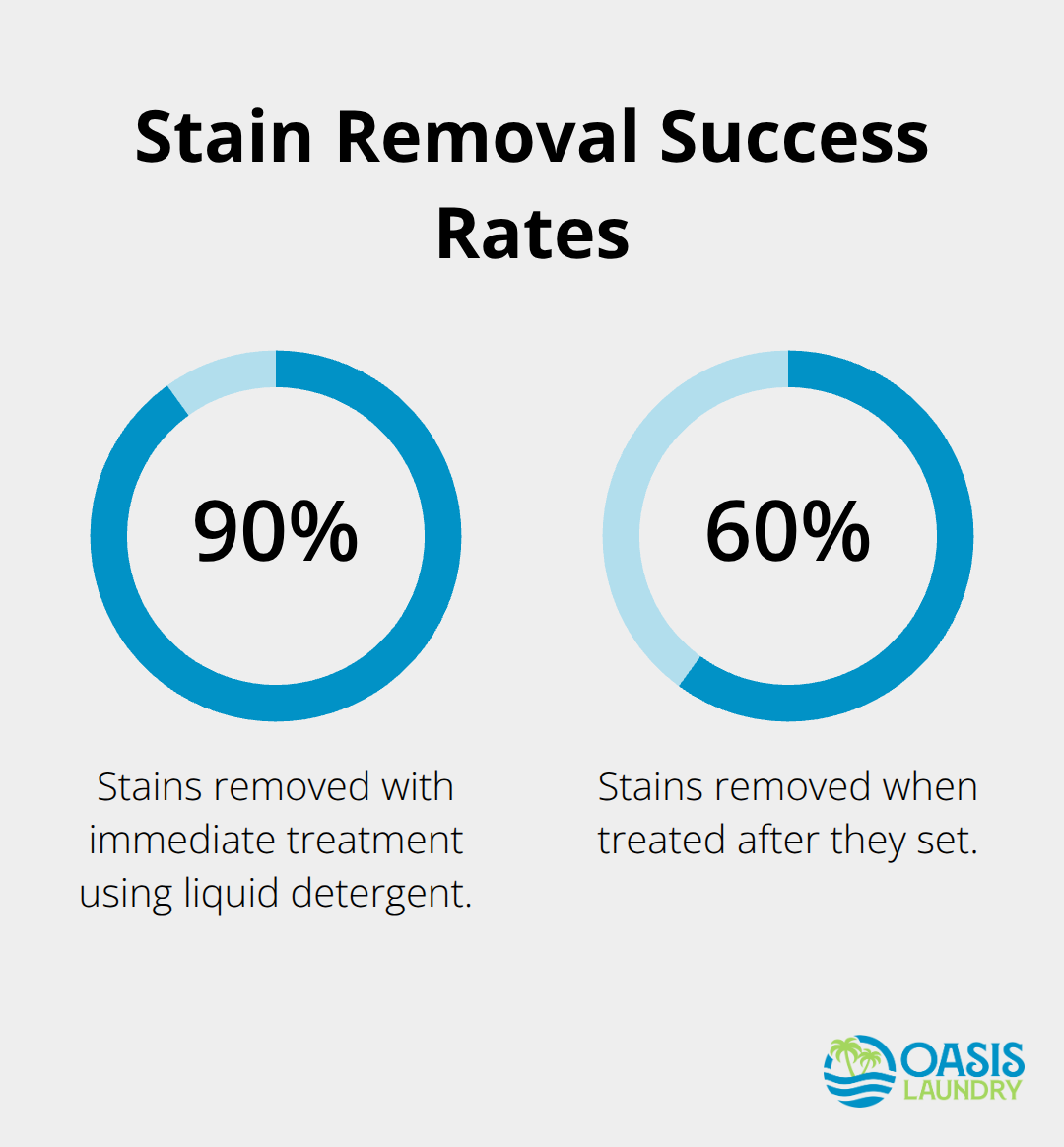
Smart Fabric Separation Protects Your Investment
Sort by fabric weight to prevent your delicate blouses from destruction by heavy jeans during the wash cycle. Mix similar weights together – towels with towels, lightweight shirts with other lightweight items. Mary Gagliardi from Clorox emphasizes that proper separation prevents fabric damage and lint transfer better than any expensive fabric protection products. Wash corduroy separately from towels to avoid lint buildup that makes clothes look worn after just a few washes.
Care Labels Reveal Water Temperature Secrets
Hot water shrinks cotton and fades colors permanently, while cold water cleans effectively with modern detergents designed for lower temperatures. Sarah Armstrong from Maytag confirms that washing machines use about 18% hot water and 82% cold water, making cold water both economical and fabric-friendly. Check every garment label before you wash – silk and wool require hand wash in lukewarm water, while sturdy cottons handle hot water cycles. Homeowners who ignore these instructions spend an average of $200 annually on damaged clothing replacements.
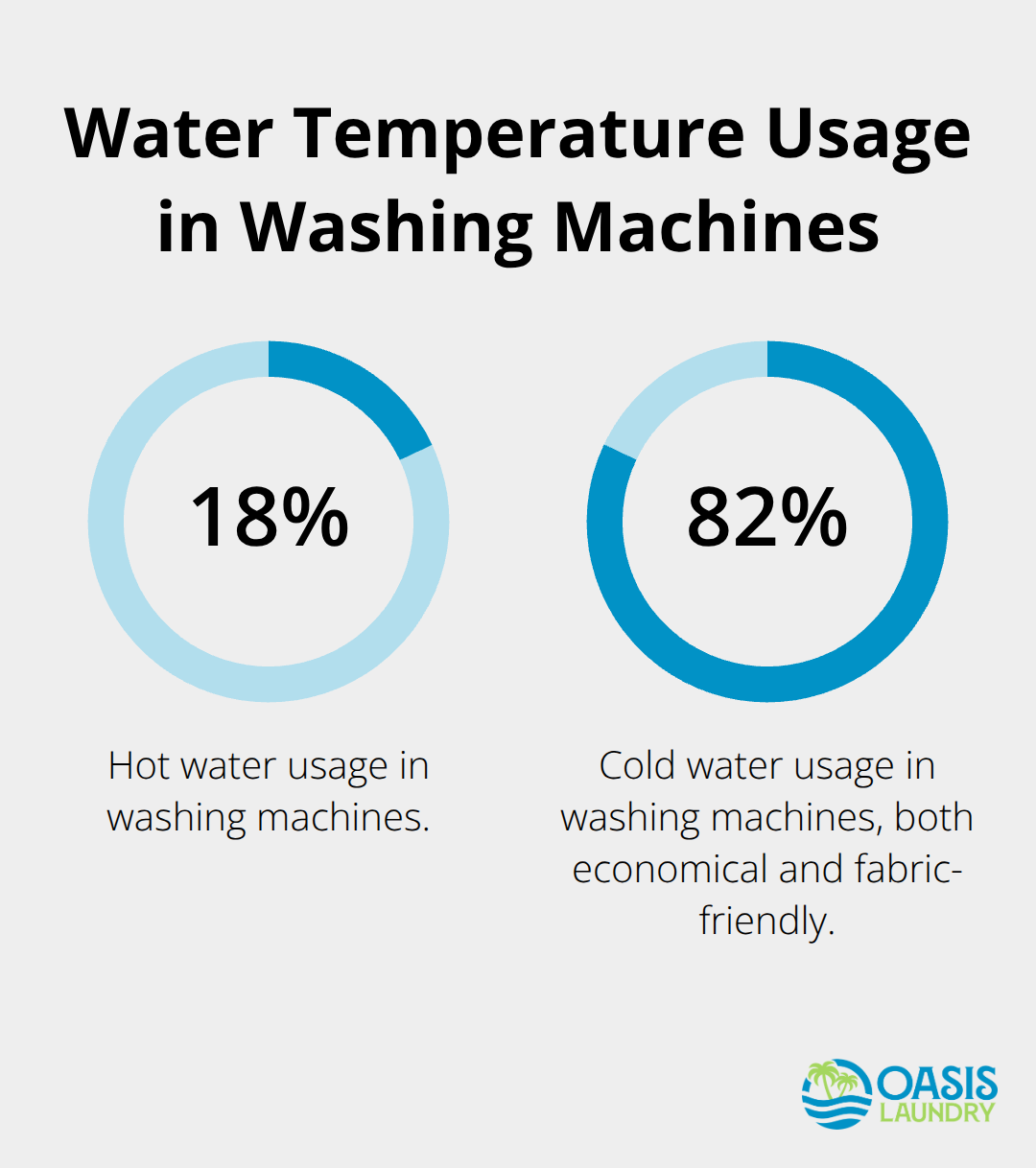
These preparation steps set the foundation for the actual wash process, where proper technique and equipment settings determine your final results. Pre-treating stains before washing gives cleaning solutions time to work effectively.
Washing Techniques for Maximum Efficiency
Water Temperature Controls Your Results
Water temperature controls cleaning power more than detergent brand or machine type. Hot water at 140°F dissolves oils and kills bacteria effectively, but shrinks cotton and fades colors permanently after just three washes. Cold water at 60-80°F preserves fabric integrity and saves energy costs, while modern detergents formulated for cold water clean just as effectively as hot water versions. Warm water at 90-110°F offers the perfect compromise for mixed loads that contain both whites and colors, providing adequate cleaning power without the fabric damage risk.
Proper Detergent Measurement Prevents Costly Mistakes
Three tablespoons of liquid detergent clean a medium load completely, while excess detergent creates residue buildup that attracts dirt and makes clothes look dingy. Sarah Armstrong from Maytag confirms that too little detergent performs just as poorly as too much, leaving soil embedded in fabric fibers. Liquid detergent dissolves better than powder in cold water (preventing white streaks on dark clothes that require rewashing). Overloaded machines need 50% more detergent to achieve the same results, making proper load technique essential for detergent effectiveness.
Smart Machine Loading Maximizes Clean Results
Balance your load with items of similar weight to prevent machine errors and excessive wear on clothes. Mix lightweight shirts together and heavy jeans in separate loads to avoid fabric damage from mechanical stress during the spin cycle. Fill machines to 75% capacity maximum – clothes need space to circulate freely for detergent and water to penetrate fabric fibers effectively. Overstuffed machines produce poor results and require second wash cycles (doubling your time investment and utility costs while reducing clothing lifespan significantly).
The wash cycle sets the foundation, but proper drying techniques protect your investment and complete the process efficiently.
Drying Methods That Save Time and Protect Clothes
Heat Settings Determine Fabric Survival
High heat destroys elastic fibers in athletic wear and shrinks cotton permanently within a single cycle. Cotton t-shirts and jeans handle medium heat at 135°F effectively, while synthetic blends require low heat at 125°F to prevent melting and static buildup. Delicate fabrics like silk, wool, and spandex-blend activewear need air-dry settings only – heat exposure breaks down these fibers through degradation mechanisms. Athletic clothing manufacturers recommend air drying because heat damages moisture-wicking properties (that cost $40-60 per garment to replace).
Timing Prevents Wrinkle Formation
Remove clothes immediately when the cycle ends to prevent wrinkles from setting into fabric fibers. Clothes left in hot dryers for more than 10 minutes develop permanent creases that require ironing or steaming to remove. Moisture sensors in modern dryers stop cycles at optimal dryness levels – ignoring these automatic shutoffs leads to overdrying that weakens fabric and increases static electricity. Professional cleaners remove items 2-3 minutes before complete dryness, allowing residual heat to finish the process while preventing overdrying damage that shortens clothing lifespan by 30%.
Skip Fabric Softeners and Dryer Sheets
Dryer balls reduce drying time by 25% through improved air circulation and natural fabric softening without chemical residue buildup. Fabric softeners coat fibers with waxy substances that reduce towel absorbency and create sensor buildup in dryers (leading to damp laundry and machine malfunctions). Consumer Reports testing shows wool dryer balls perform better than chemical alternatives while lasting 2-4 years compared to single-use dryer sheets. Tennis balls work equally well for fluffing comforters and down items, costing $3 compared to $8-12 for specialized dryer balls with identical results.
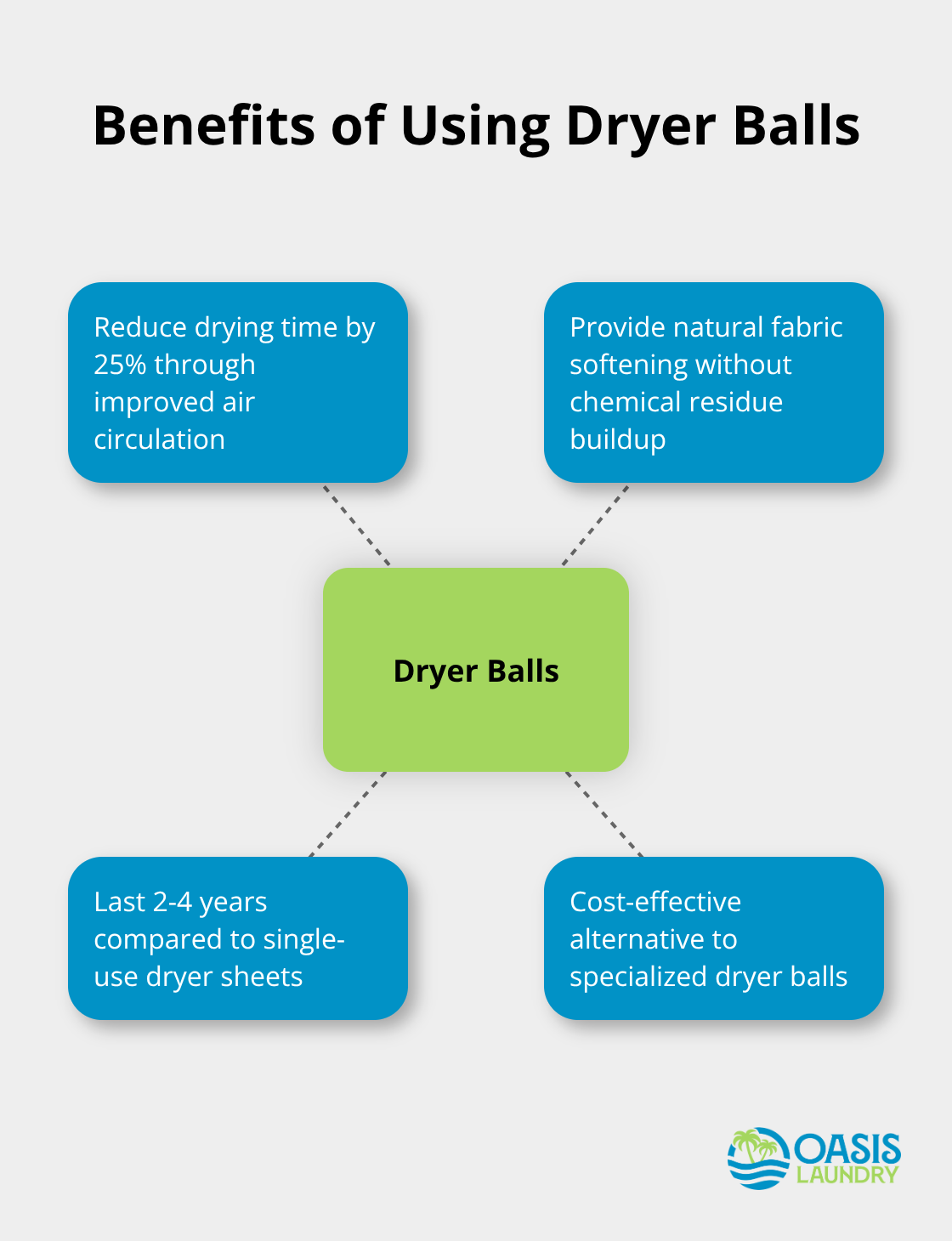
Final Thoughts
These proven techniques deliver quick and clean laundry results while they protect your investment in quality clothing. Immediate stain treatment, proper fabric separation, and correct water temperatures prevent the costly mistakes that damage fabrics permanently. Smart detergent measurement and balanced machine loads maximize effectiveness without wasted time or money on repeat wash cycles.
These procedures extend clothing lifespan by 30% and reduce energy costs through efficient wash and dry practices. Your clothes stay vibrant longer, towels maintain their absorbency, and delicate fabrics avoid heat damage that requires expensive replacements. Professional-quality results become achievable at home when you apply these methods consistently.
Professional services become valuable when time constraints prevent proper technique implementation or when you deal with specialty items that require expert care. Oasis Laundry provides convenient pickup and delivery services for busy households, plus restoration services for items damaged by water, fire, or mold (maintaining the quality standards these techniques achieve at home). Their approach handles both residential and commercial needs while they deliver the same attention to detail you would apply yourself.


